Take the First Step For Estimate!
- Accurancy
- Efficiency
- Transparency
- Customization
- Time Saving
- Professionalism
- Cost Control
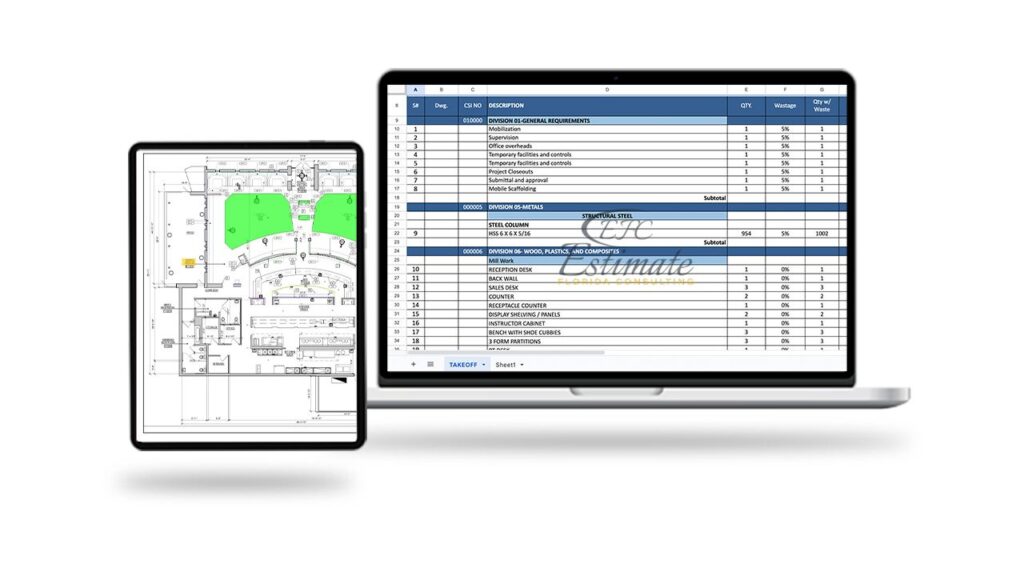
Large-scale renovation projects, including commercial buildings, hotels, and public spaces, often require substantial investment, with flooring replacement being a significant component. Accurately estimating the costs associated with flooring replacement is crucial for budgeting and project planning.
In estimating the total costs for a flooring replacement project, a thorough consideration of various factors is essential. This includes calculating material costs by multiplying the price per square foot by the total area to be covered.
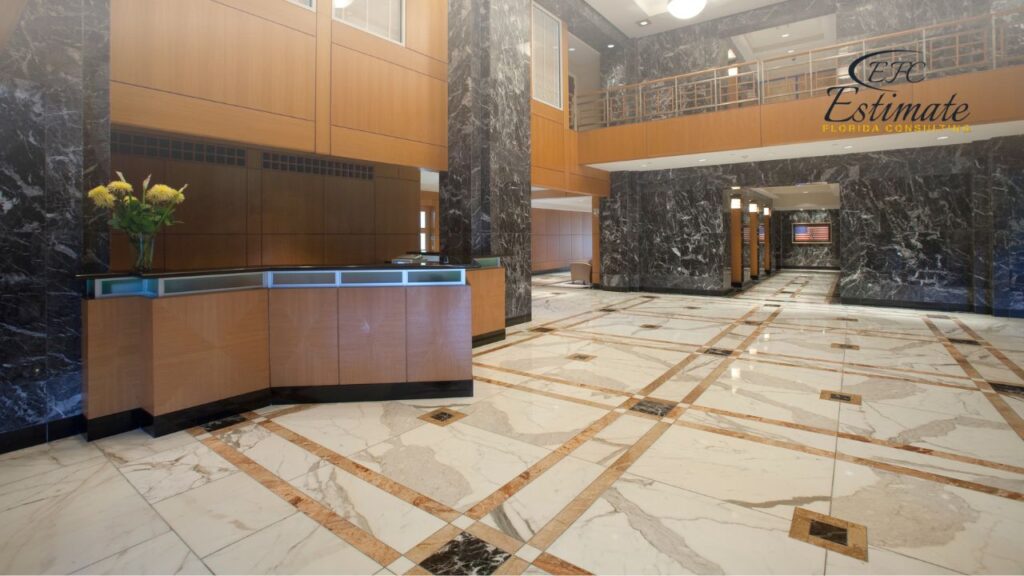
Labor costs, encompassing preparation, installation, and finishing, must also be factored in. Additionally, any expenses associated with additional features or specific project requirements should be accounted for. To mitigate unforeseen expenses, a contingency percentage, typically around 10% of the total estimate, is included. For a 10,000 square foot area with mid-range vinyl flooring, material costs amount to $50,000, labor costs total $30,000, additional features add $10,000, and a 10% contingency accounts for $9,000, resulting in a total estimated cost of $99,000. This comprehensive approach ensures an accurate assessment of the project’s financial requirements and helps in effective budget planning and management.

For large-scale renovation projects, accurately estimating flooring replacement costs is crucial for budget planning. Various flooring types come with different material and installation expenses per square foot. These include carpet, laminate, vinyl or linoleum, ceramic or porcelain tile, hardwood, engineered wood, bamboo, stone (marble, granite), and concrete. Each option offers distinct aesthetics, durability, and maintenance requirements, influencing overall project costs. By understanding the cost range associated with each flooring type, project managers can make informed decisions to meet design preferences, functional needs, and budget constraints effectively.
Flooring Type | Cost per sq.ft. (Material + Installation) |
Carpet | $3.90 to $9.10 |
Laminate | $5.20 to $10.40 |
Vinyl or Linoleum | $2.60 to $6.50 |
Ceramic or Porcelain Tile | $6.50 to $19.50 |
Hardwood | $10.40 to $19.50 |
Engineered Wood | $7.80 to $18.20 |
Bamboo | $6.50 to $10.40 |
Stone (Marble, Granite) | $19.50 to $39.00 |
Concrete | $2.60 to $7.80 |
The choice of flooring material significantly impacts the overall cost of replacement. Different materials come with varying price points, durability levels, and maintenance requirements. For example, opting for basic concrete resurfacing may be more cost-effective upfront but could require more frequent maintenance over time compared to epoxy coatings or resin flooring. Additionally, specialized materials like chemical-resistant options may command higher prices due to their unique properties and installation requirements.
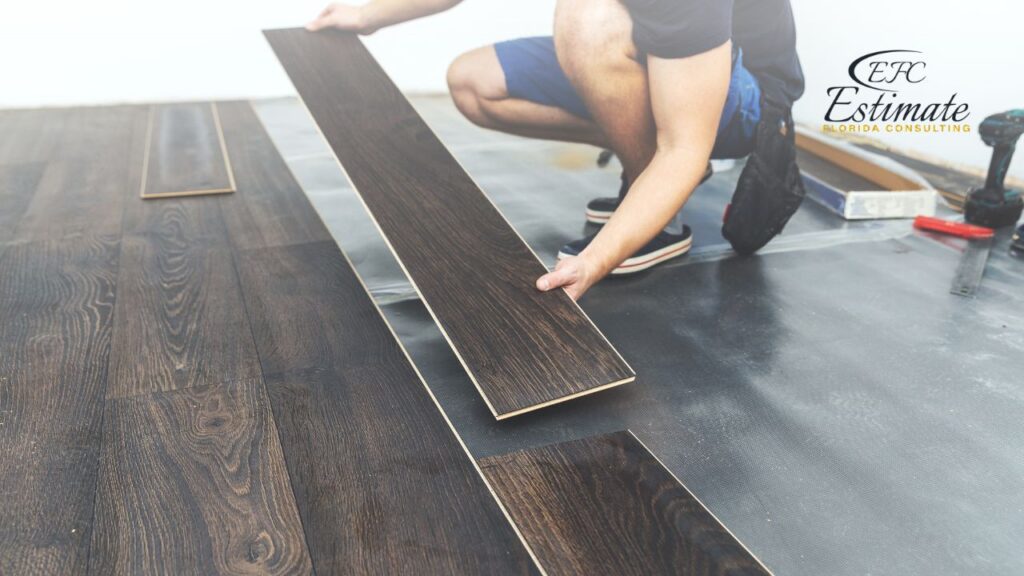
Thus, facility managers must carefully evaluate the pros and cons of each material in relation to their budget and long-term maintenance strategy before making a decision.
The choice of flooring material significantly impacts the overall cost of replacement. Different materials come with varying price points, durability levels, and maintenance requirements. For example, opting for basic concrete resurfacing may be more cost-effective upfront but could require more frequent maintenance over time compared to epoxy coatings or resin flooring. Additionally, specialized materials like chemical-resistant options may command higher prices due to their unique properties and installation requirements. Thus, facility managers must carefully evaluate the pros and cons of each material in relation to their budget and long-term maintenance strategy before making a decision.
The size of the project directly correlates with the overall cost of flooring replacement. Larger projects require more materials, labor, and time to complete, leading to higher expenses. For instance, a small warehouse or storage facility may only require a few days of work and a limited amount of materials, resulting in lower costs. Conversely, a large-scale warehouse with extensive floor space will incur higher expenses due to the sheer volume of materials needed and the extended duration of the project. Facility managers should accurately assess the size of the project and allocate sufficient resources to ensure a smooth and cost-effective replacement process.

Fully Insured License
Hire Contractor for Flooring Installation

Make Informed Design Decisions Showcase Your Design Ideas
Get RenderingThe condition of the existing flooring and the extent of preparation and removal required can significantly impact replacement costs. In some cases, old flooring may need to be removed entirely before new materials can be installed, adding time and expense to the project. Moreover, surface preparation tasks such as grinding, leveling, or repairing the substrate may be necessary to ensure proper adhesion and performance of the new flooring. Facility managers should budget for these preparatory tasks accordingly and factor them into the overall cost estimation to avoid unexpected expenses during the project execution.
Design and aesthetic considerations, such as custom patterns, colors, or textures, can influence flooring replacement costs. While basic options like plain concrete may be more cost-effective, facilities seeking a more aesthetically pleasing or branded look may opt for customized designs or decorative finishes, which can incur additional expenses. Moreover, certain design elements may require specialized materials or installation techniques, further impacting costs. Facility managers should carefully balance design preferences with budgetary constraints to achieve the desired aesthetic while maintaining cost-effectiveness.
Labor costs constitute a significant portion of flooring replacement expenses and can vary depending on factors such as location, project complexity, and skilled labor availability. Urban areas with higher living costs and greater demand for specialized tradespeople may command higher labor rates compared to rural regions. Additionally, complex projects requiring intricate designs or specialized installation techniques may require more experienced and skilled labor, leading to higher expenses.
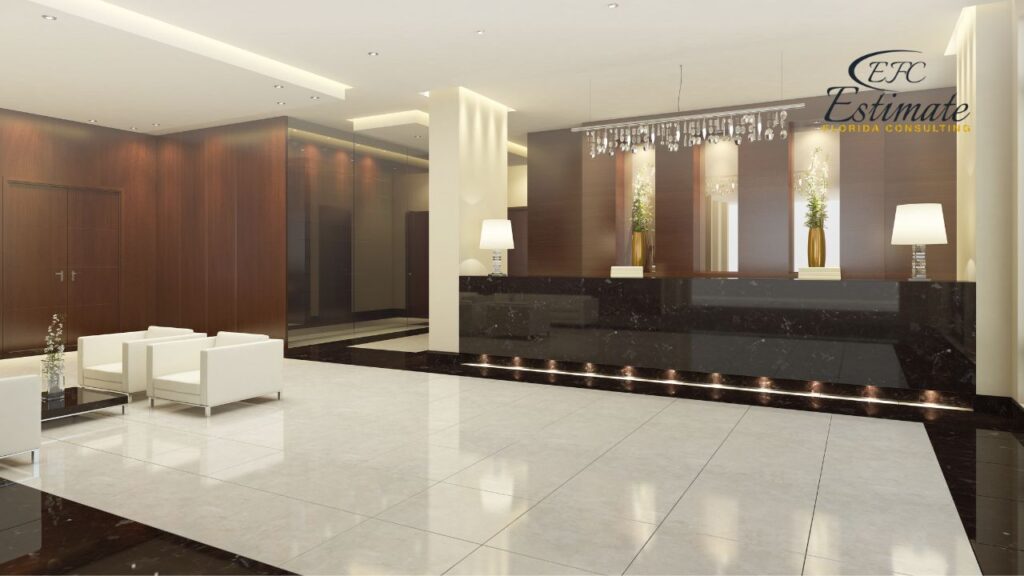
Facility managers should obtain competitive bids from reputable contractors and consider the expertise required for the project when estimating labor costs to ensure budgetary accuracy.
Logistical challenges such as access restrictions, tight timelines, or limited workspace can affect flooring replacement costs by necessitating additional resources or causing project delays. For example, working in occupied facilities may require scheduling around operational hours to minimize disruption, potentially extending the project timeline and increasing labor costs. Similarly, projects in remote or hard-to-reach locations may incur higher transportation and logistical expenses. Facility managers should anticipate and plan for these challenges proactively to mitigate their impact on project costs and timelines.
Incorporating additional features and requirements, such as anti-slip coatings, line markings, or safety enhancements, can add complexity and cost to flooring replacement projects. While these features are essential for optimizing safety and operational efficiency, they may require specialized materials, equipment, or installation techniques, leading to higher expenses. Facility managers should carefully assess the need for additional features and weigh the cost implications against the benefits to ensure alignment with budgetary constraints and project objectives.
The costs associated with the preparation and removal of old flooring as well as the preparation of the subfloor for new installation can significantly impact the overall budget of a flooring project. These costs are influenced by the size of the project, the condition of the existing flooring, the type of new flooring being installed, and local labor rates. Below is an overview of the potential costs involved in these preparatory stages of a flooring replacement project.
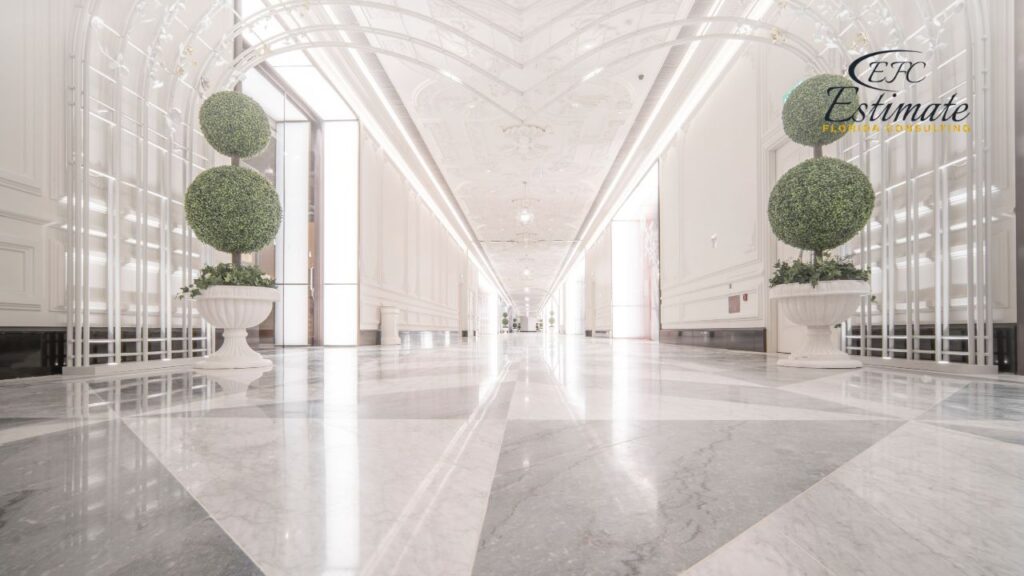
Receive highly accurate estimates tailored to your zip code, giving you the edge to secure more projects. Upload your plans and start winning!
Accurately estimating the costs associated with flooring replacement in large-scale renovation projects is essential for effective budget planning and project management. By considering factors such as the type of flooring material, project size, preparation and removal of existing flooring, labor costs, design considerations, logistical challenges, and additional features and requirements, facility managers can develop comprehensive cost estimates. These estimates ensure that sufficient resources are allocated to cover material expenses, labor costs, and any unforeseen contingencies, ultimately facilitating the successful execution of flooring replacement projects within budgetary constraints. Additionally, careful consideration of design preferences, logistical constraints, and regulatory requirements allows for the implementation of cost-effective solutions that meet aesthetic, functional, and compliance objectives.
In large-scale renovation projects, flooring costs vary significantly depending on the type chosen. Carpet typically ranges from $3.90 to $9.10 per square foot, while laminate flooring costs between $5.20 and $10.40 per square foot. Vinyl or linoleum flooring is priced between $2.60 and $6.50 per square foot, and ceramic or porcelain tile ranges from $6.50 to $19.50 per square foot. Hardwood flooring, on the other hand, can cost between $10.40 and $19.50 per square foot.
Total project costs encompass various elements, including material expenses, labor fees, additional features, and a contingency allocation, typically around 10% of the total estimate. For instance, in a scenario involving a 10,000 square foot area with mid-range vinyl flooring, material costs amount to $50,000, while labor costs total $30,000. Additionally, expenses for extra features contribute another $10,000 to the budget. To accommodate unforeseen circumstances, a contingency of $9,000 is factored in.
Factors such as aesthetics, durability, maintenance requirements, and budget constraints influence the selection of flooring types. Each option offers distinct characteristics that impact overall project costs and design preferences.
Project managers should consider factors such as material and labor costs, project specifications, additional features, and contingency planning. By thoroughly evaluating these aspects, they can develop accurate cost estimates and effectively manage project budgets.
Including a contingency percentage (typically around 10% of the total estimate) helps mitigate unforeseen expenses and fluctuations in project requirements. It provides a buffer to cover unexpected costs and ensures that the project stays within budget constraints.
Here I am going to share some steps to get your flooring replacement cost for large-scale renovation projects estimate report.
You can send us your plan on info@estimatorflorida.com
Before starting your project, we send you a quote for your service. That quote will have detailed information about your project. Here you will get information about the size, difficulty, complexity and bid date when determining pricing.
Our team will takeoff and estimate your project. When we deliver you’ll receive a PDF and an Excel file of your estimate. We can also offer construction lead generation services for the jobs you’d like to pursue further.



561-530-2845
info@estimatorflorida.com
Address
5245 Wiles Rd Apt 3-102 St. Pete Beach, FL 33073 United States
561-530-2845
info@estimatorflorida.com
Address
5245 Wiles Rd Apt 3-102 St. Pete Beach, FL 33073 United States
All copyright © Reserved | Designed By V Marketing Media | Disclaimer